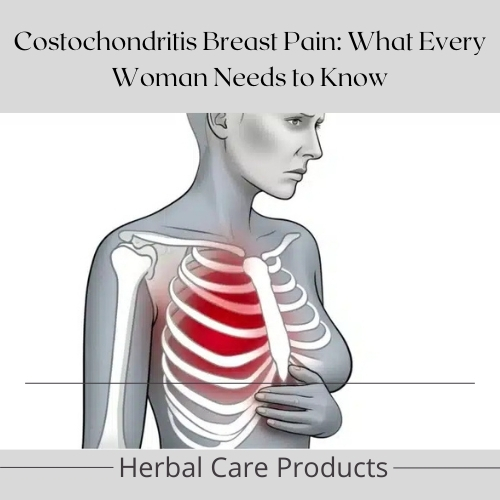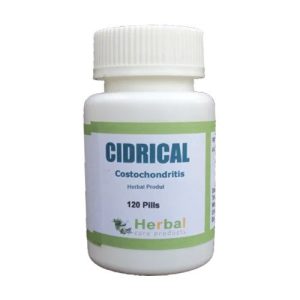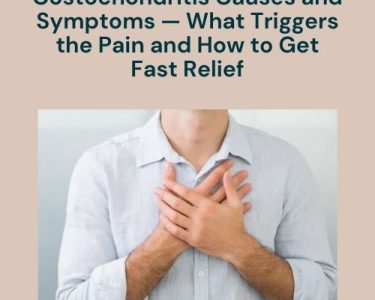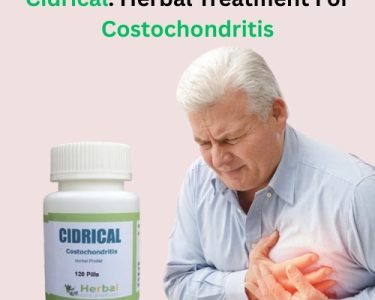Costochondritis breast pain is a condition that many women experience, yet it often goes unrecognized. This type of pain, caused by inflammation of the cartilage connecting the ribs to the breastbone (sternum), can be alarming due to its location near the chest. Costochondritis is essential for addressing its symptoms effectively and distinguishing it from other serious health concerns.
What is Costochondritis?
Costochondritis is the inflammation of the costal cartilage, the structure that links your ribs to the sternum. It is a benign condition but can cause significant discomfort. The pain associated with costochondritis often mimics that of a heart attack or other cardiac conditions, making proper diagnosis crucial.
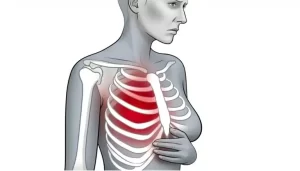
Symptoms of Costochondritis Breast Pain
- Sharp or Aching Pain: Typically felt in the upper chest, the pain may worsen when you move, cough, or breathe deeply.
- Tenderness: Pressing on the chest area often triggers pain, a hallmark sign of costochondritis.
- Radiating Pain: In some cases, the discomfort may spread to the back or abdomen.
- Localized Swelling: Though rare, swelling (Tietze syndrome) may accompany costochondritis.
What Causes Costochondritis Breast Pain?
The exact causes are not always clear, but several factors may contribute:
- Physical Strain: Repetitive activities, heavy lifting, or intense workouts can lead to overuse injuries in the chest area.
- Trauma: A direct impact or injury to the chest can inflame the costal cartilage.
- Infections: Certain viral or bacterial infections may trigger inflammation.
- Arthritis: Conditions like osteoarthritis or rheumatoid arthritis can contribute to chest pain.
Who is at Risk?
While costochondritis can affect anyone, women between the ages of 20 and 40 are more commonly diagnosed. Other risk factors include:
- A history of repetitive upper body movements.
- Conditions like fibromyalgia or arthritis.
- Previous chest injuries or surgeries.
How is Costochondritis Diagnosed?
If you experience persistent breast pain, consult a healthcare provider. Diagnosis typically involves:
- Physical Exam: Your doctor will press on the chest area to assess tenderness.
- Medical History: Providing details about your symptoms and recent activities can help pinpoint the cause.
- Imaging Tests: X-rays, MRIs, or CT scans may be used to rule out other conditions, such as fractures or cardiac issues.
Can Costochondritis Cause Breast Pain?
Costochondritis is a condition characterized by inflammation of the cartilage that connects the ribs to the breastbone, also known as the costosternal joint. This inflammation can cause sharp or aching pain in the chest, which is often mistaken for heart problems or other conditions. One of the common symptoms of costochondritis is localized pain that can radiate to nearby areas, including the breasts. While the pain originates from the chest wall, it may feel like breast pain due to the proximity of the inflamed cartilage to the breast tissue. This can sometimes cause confusion or concern, particularly in women, as breast pain is often associated with breast-related conditions.
The breast pain caused by costochondritis is typically musculoskeletal rather than hormonal or glandular. It may worsen with certain movements, such as twisting, deep breathing, or pressing on the affected area. This is because the inflamed cartilage becomes irritated when pressure or strain is applied. Unlike breast pain related to menstrual cycles or other breast disorders, costochondritis-induced pain does not fluctuate with hormonal changes. Instead, it is directly linked to the inflammation in the chest wall, making it distinct in its presentation and behavior.
If you experience breast pain due to costochondritis, it is important to consult a healthcare professional for an accurate diagnosis. While the condition is generally benign and resolves on its own, the discomfort can be managed with anti-inflammatory medications, rest, and physical therapy if needed. Understanding the connection between costochondritis and breast pain can help alleviate fears of more serious conditions and guide you toward appropriate treatment options.
Effective Treatments for Costochondritis Breast Pain
Costochondritis is a painful condition caused by inflammation of the cartilage connecting the ribs to the breastbone (sternum). While the condition is generally benign, the associated breast pain can be distressing. Below are some effective treatments to help alleviate costochondritis breast pain:
1. Rest and Activity Modification
Avoid activities that worsen the pain, such as heavy lifting, strenuous exercise, or repetitive chest movements. Resting allows the inflamed cartilage to heal and reduces the risk of aggravating the condition.
2. Over-the-Counter (OTC) Pain Relievers
Non-steroidal anti-inflammatory drugs (NSAIDs) like ibuprofen (Advil) or naproxen (Aleve) can help reduce inflammation and pain. Acetaminophen (Tylenol) is another option for pain relief, although it does not reduce inflammation.
3. Heat or Cold Therapy
- Heat Therapy: Applying a warm compress or heating pad to the affected area can relax muscles and ease discomfort.
- Cold Therapy: Using an ice pack wrapped in a towel can reduce inflammation and numb the pain.
4. Stretching and Gentle Exercises
Gentle stretching exercises targeting the chest and upper back can improve flexibility and reduce stiffness. Avoid high-intensity workouts until the pain subsides.
5. Physical Therapy
A physical therapist can guide you through specific exercises and techniques to strengthen the chest muscles, improve posture, and reduce strain on the rib cage.
6. Posture Correction
Poor posture can exacerbate costochondritis pain. Maintain an upright position when sitting or standing to reduce pressure on the chest area.
7. Anti-inflammatory Diet
Incorporate foods with anti-inflammatory properties, such as:
- Fatty fish (salmon, mackerel)
- Leafy greens (spinach, kale)
- Nuts and seeds
- Berries
- Turmeric and ginger
8. Stress Management
Stress can lead to muscle tension, worsening chest pain. Practice relaxation techniques like deep breathing, meditation, or yoga to manage stress levels.
9. Topical Pain Relievers
Creams or gels containing menthol, capsaicin, or lidocaine can provide localized pain relief.
10. Corticosteroid Injections
For severe or persistent pain, a healthcare provider may recommend corticosteroid injections to reduce inflammation directly in the affected area.
11. Alternative Therapies
- Acupuncture: Some individuals find relief through acupuncture, which may help reduce inflammation and promote relaxation.
- Chiropractic Care: Adjustments focusing on the thoracic spine may alleviate discomfort in certain cases.
12. When to See a Doctor
If your symptoms persist despite at-home treatments or worsen over time, consult a healthcare provider. This ensures the pain is not due to other underlying conditions, such as a heart or lung issue.
Preventing Costochondritis Breast Pain
Although it’s not always possible to prevent costochondritis, these tips can help reduce your risk:
- Practice Good Posture: Avoid slouching, especially if you sit for long periods.
- Modify Physical Activities: Use proper techniques when lifting heavy objects or exercising.
- Listen to Your Body: Rest when you feel chest discomfort to avoid aggravating the condition.
When to Seek Medical Attention
Costochondritis is usually not life-threatening, but it’s important to rule out other causes of chest pain, especially if you experience:
- Severe or sudden chest pain.
- Shortness of breath.
- Pain that radiates to the jaw, shoulder, or arm.
These symptoms could indicate a heart-related issue, and immediate medical attention is necessary.
Conclusion
Costochondritis breast pain, while often benign, can significantly impact your daily life. Recognizing the symptoms and seeking prompt medical advice are vital for managing the condition effectively. With the right combination of rest, Herbal Treatment For Costochondritis, and prevention strategies, most women can find relief and resume their normal activities without discomfort.

